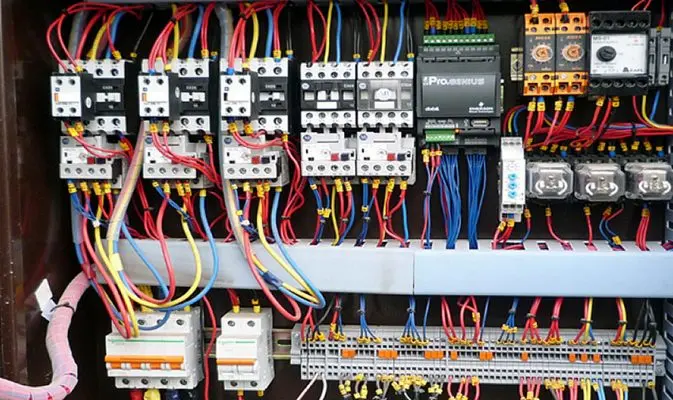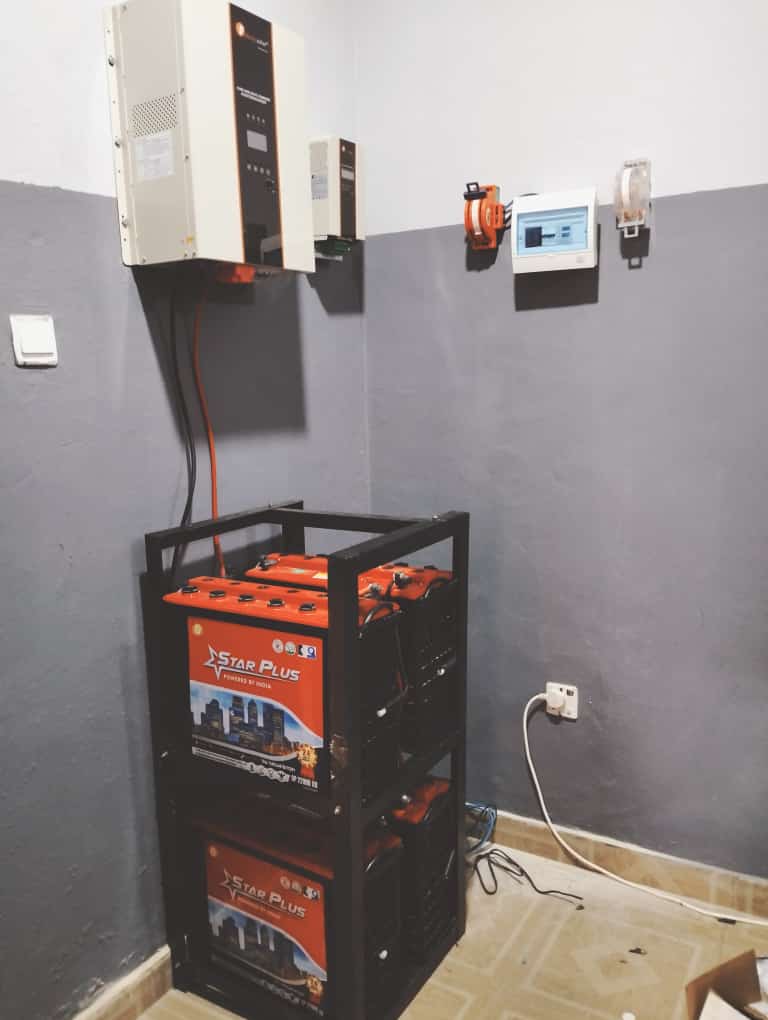Okay, buckle up! Let’s dive into the fascinating world of designing energy-efficient motor control systems. It’s like giving your motors a smart brain that helps them sip energy instead of gulping it down. Ready to become an energy-saving guru for motors? Let’s go!
Hey there! Ever wondered how much energy those hardworking motors in our industries and even homes actually consume? It’s a lot! But guess what? We can make them way smarter and kinder to our energy bills (and the planet!). This guide is your friendly roadmap to designing motor control systems that are energy-efficient powerhouses. Let’s get started on this exciting journey!

Why Bother with Energy-Efficient Motor Control? It’s a No-Brainer!
Think of it like this: would you leave your car engine running full throttle even when you’re stuck in traffic? Probably not, right? Motors often work in similar inefficient ways if we don’t give them the right controls. Designing for energy efficiency isn’t just a trend; it’s a smart move.
Saving Money, One Watt at a Time
The most obvious perk? Lower energy bills! When your motors use less power, your operational costs shrink. Over time, these savings can be HUGE. It’s like finding money you didn’t even know you had!
Going Green and Loving It
Beyond the dollars and cents, energy-efficient systems are kinder to the environment. Less energy consumption means a smaller carbon footprint. You’re not just saving money; you’re contributing to a healthier planet. High five for that!
Boosting Performance and Lifespan
Believe it or not, efficient motor control can actually make your motors perform better and last longer. By optimizing their operation, you reduce stress and wear and tear. It’s like giving your motors a longer and happier life!
The Core Ingredients: Key Components of Efficient Motor Control
So, what goes into making a motor control system energy-efficient? It’s a mix of clever hardware and even smarter software. Let’s look at some of the key players.
The Mighty Variable Frequency Drive (VFD)
Think of a VFD as the maestro of your motor. It controls the frequency and voltage supplied to the motor, allowing it to run at the exact speed needed for the task. No more full-speed-all-the-time waste! It’s like having a volume knob for your motor’s energy consumption.
How VFDs Work Their Magic
Instead of just turning a motor on or off, a VFD smoothly adjusts its speed to match the demand. If a pump only needs to move a little fluid, the VFD tells the motor to slow down, using only the necessary energy. It’s like driving your car at the right speed instead of always flooring the gas pedal.
How to Integrate Smart Home Devices Without Compatibility Issues
Benefits of Embracing VFDs
- Significant Energy Savings: This is the big one! VFDs can drastically reduce energy consumption, especially in applications with varying loads.
- Precise Speed Control: Get the exact speed you need for your process, improving efficiency and product quality.
- Soft Starting and Stopping: Say goodbye to jerky starts and stops! VFDs provide smooth acceleration and deceleration, reducing mechanical stress.
- Extended Motor Lifespan: By reducing stress and heat, VFDs help your motors last longer.
High-Efficiency Motors: The Strong Foundation
Even the smartest control system can only do so much with an inherently inefficient motor. That’s where high-efficiency motors come in. These motors are designed with better materials and tighter tolerances to minimize energy losses.
What Makes a Motor “High-Efficiency”?
It’s all about minimizing those sneaky energy losses that happen inside a motor, like heat and friction. High-efficiency motors use better quality materials, optimized designs, and tighter manufacturing processes to reduce these losses.
Why Pair High-Efficiency Motors with Smart Controls?
Think of it as a power couple! A high-efficiency motor is already designed to be energy-sipping, and when you pair it with a smart VFD, you create a super-efficient dream team. You maximize your energy savings and get the best performance possible.
Smart Sensors and Feedback Systems: The Eyes and Ears
To control a motor efficiently, you need to know what’s going on. That’s where sensors and feedback systems come in. They provide real-time data on things like speed, load, and temperature, allowing the control system to make intelligent adjustments.
The Role of Real-Time Data
Imagine trying to cook without knowing the temperature of your oven. You’d probably end up with burnt or undercooked food! Similarly, without real-time data, your motor control system is operating blind. Sensors provide the crucial information needed for optimal performance and efficiency.
Types of Sensors and Feedback Mechanisms
- Speed Sensors (Encoders): Tell the control system exactly how fast the motor is spinning.
- Current and Voltage Sensors: Monitor the electrical input to the motor.
- Torque Sensors: Measure the rotational force the motor is producing.
- Temperature Sensors: Keep an eye on the motor’s heat to prevent overheating and ensure efficient operation.
Intelligent Control Algorithms: The Brains of the Operation
The hardware is important, but the software that controls it is where the real magic happens. Intelligent control algorithms analyze the data from sensors and make decisions on how to operate the motor most efficiently.
PID Control: The Classic Workhorse
Proportional-Integral-Derivative (PID) control is a widely used algorithm that adjusts the motor’s output based on the difference between the desired value and the actual value. It’s like a thermostat for your motor, constantly making small adjustments to maintain the target.
Advanced Control Strategies
Beyond PID, there are more sophisticated algorithms like model predictive control and adaptive control that can further optimize energy efficiency, especially in complex applications with changing conditions.

Designing for Efficiency: Practical Steps You Can Take
Okay, so you know the key components. Now, how do you actually design an energy-efficient motor control system? Here are some practical steps to guide you.
Understanding the Application: Know Your Motor’s Needs
Before you even think about hardware, you need to deeply understand the application. What does the motor need to do? the typical load variations? the required speed ranges? This analysis is crucial for selecting the right components and control strategies.
Analyzing Load Profiles
Is the motor running at a constant load, or does it experience frequent changes? Understanding the load profile helps you determine if a VFD is necessary and how to optimize its settings.
Determining Speed Requirements
Does the application require a fixed speed, or does it need variable speed operation? This will heavily influence the choice of control methods.
Selecting the Right Motor and Drive: Matching the Perfect Pair
Choosing a high-efficiency motor that’s properly sized for the application is the first step. Then, you need to select a VFD that’s compatible with the motor and meets the control requirements.
Motor Sizing Considerations
Oversizing a motor can lead to inefficiency, as it will operate at a lower percentage of its rated load. Selecting the right size motor ensures optimal performance and energy use.
VFD Compatibility and Features
Make sure the VFD’s voltage and current ratings match the motor’s specifications. Consider features like built-in energy monitoring and advanced control algorithms.
Implementing Smart Control Strategies: Making it Intelligent
This is where you put the “smart” in smart motor control. Implementing appropriate control algorithms and configuring the VFD correctly are key to maximizing energy efficiency.
Optimizing VFD Parameters
VFDs have numerous adjustable parameters. Properly configuring these parameters, such as acceleration and deceleration rates, torque limits, and speed control modes, is crucial for efficient operation.
Utilizing Energy-Saving Modes
Many VFDs offer built-in energy-saving modes that automatically optimize motor operation for efficiency.14 Make sure to explore and utilize these features.
Incorporating Feedback and Monitoring: Keeping an Eye on Things
Implementing sensors and setting up a monitoring system allows you to track the system’s performance and identify areas for further optimization.
Setting Up Performance Monitoring
Track key metrics like energy consumption, motor speed, and operating temperature. This data can help you identify inefficiencies and fine-tune your control system.
Utilizing Data for Continuous Improvement
The data you collect can be invaluable for making ongoing improvements to your motor control system. Identify trends, analyze performance, and make adjustments as needed.
Regular Maintenance: Keeping Everything Running Smoothly
Just like any other mechanical system, motor control systems require regular maintenance to ensure optimal performance and efficiency.
Importance of Preventative Maintenance
Regular inspections, cleaning, and tightening of connections can prevent problems that could lead to energy waste or system failures.
Ensuring Long-Term Efficiency
Proper maintenance not only keeps the system running smoothly but also helps maintain its energy efficiency over time.
The Future of Energy-Efficient Motor Control: What’s on the Horizon?
The world of motor control is constantly evolving, with new technologies and innovations emerging all the time.
Advancements in Power Electronics
New semiconductor materials and power switching devices are leading to more efficient and compact VFDs.
The Rise of Smart and Connected Systems
The Internet of Things (IoT) is making motor control systems more connected and intelligent, enabling remote monitoring, predictive maintenance, and advanced optimization.
Artificial Intelligence and Machine Learning
AI and ML algorithms are being used to develop even smarter control strategies that can learn and adapt to changing conditions in real-time, further enhancing energy efficiency.
Conclusion: Powering the Future, Efficiently
Designing energy-efficient motor control systems isn’t just a good idea; it’s becoming a necessity. By understanding the key components, implementing smart control strategies, and staying up-to-date with the latest technologies, we can significantly reduce energy consumption, save money, and contribute to a more sustainable future. So, let’s embrace the power of efficient motor control and drive towards a greener tomorrow, one motor at a time.
Unique FAQs:
1. Can I make my existing motor system more energy-efficient without replacing everything?
Absolutely! Retrofitting with a Variable Frequency Drive (VFD) is often a great way to significantly improve the energy efficiency of an existing motor system, especially if the motor frequently operates at less than full speed.19 Adding smart sensors and optimizing control settings can also yield noticeable savings.
2. How quickly can I expect to see a return on investment (ROI) from implementing an energy-efficient motor control system?
The ROI depends on several factors, including the size and power consumption of your motors, the operating hours, and the cost of electricity. However, in many applications, the energy savings from implementing VFDs and high-efficiency motors can lead to a payback period of just a few years, sometimes even less.20
3. Are energy-efficient motor control systems more complex to maintain?
While modern motor control systems can be sophisticated, they are not necessarily more complex to maintain. In fact, features like built-in diagnostics and remote monitoring can often simplify maintenance and even predict potential issues before they lead to downtime.21 Regular preventative maintenance, as with any mechanical system, is still key.
4. What are some common mistakes to avoid when designing an energy-efficient motor control system?
One common mistake is oversizing the motor, which leads to inefficient operation. Another is not properly configuring the VFD parameters for the specific application. Ignoring the importance of feedback sensors and failing to implement a monitoring system can also hinder efficiency efforts. Finally, neglecting regular maintenance can lead to gradual performance degradation and energy waste.22
5. Can energy-efficient motor control be applied to small, single-phase motors as well, or is it primarily for large industrial applications?
While the biggest energy savings are often seen in large industrial applications with three-phase motors, energy-efficient control principles can also be applied to smaller, single-phase motors. While VFDs for single-phase motors are less common and can be more expensive, optimizing motor selection, using smart electronic controls, and implementing load-based operation can still lead to significant energy reductions in smaller applications like HVAC fans and pumps.

